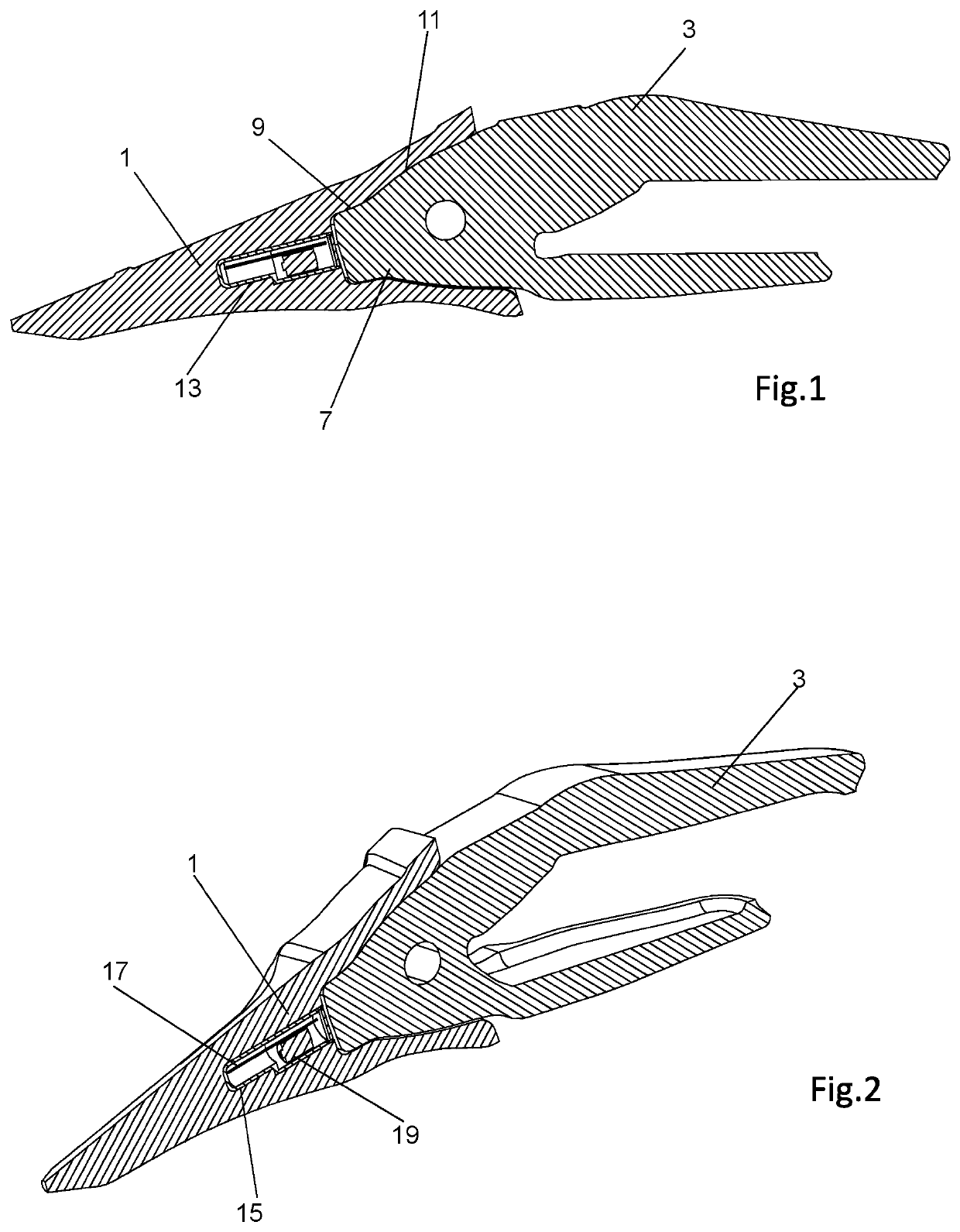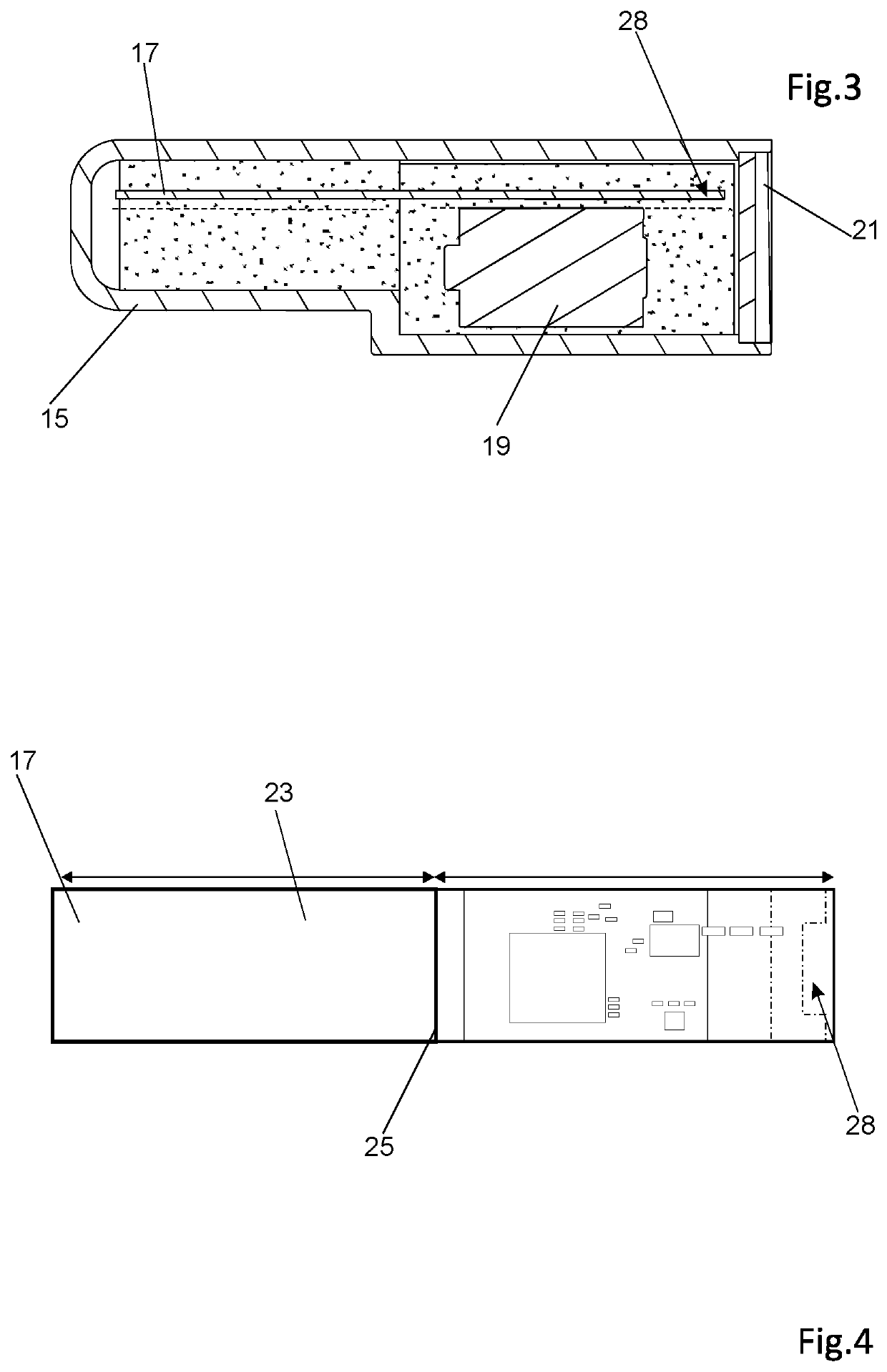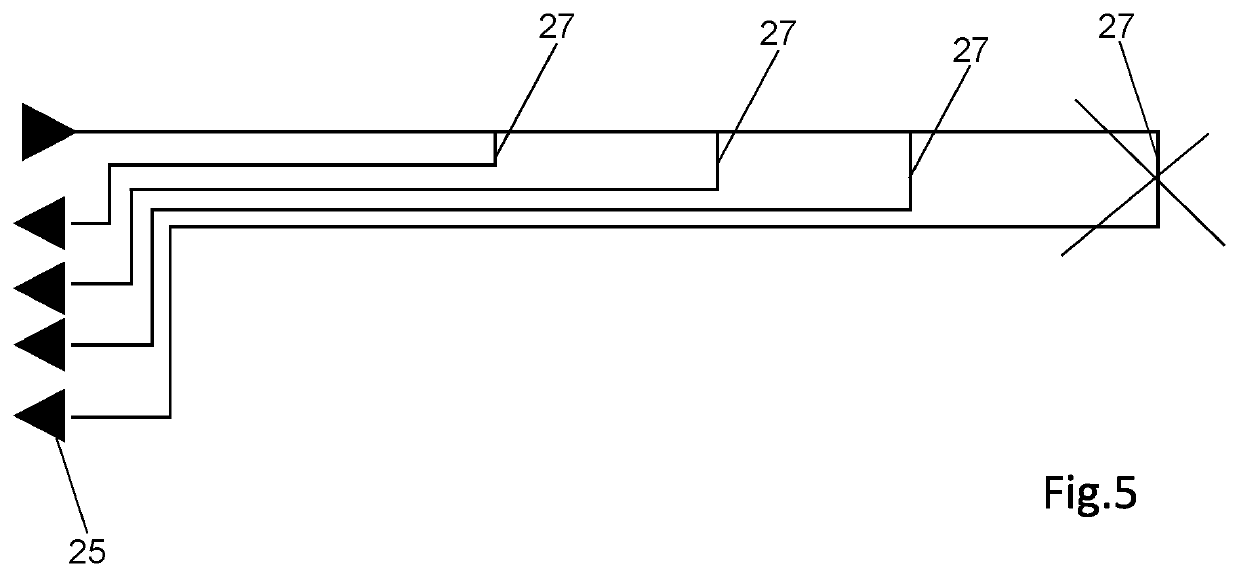Wear sensor and the corresponding wear element, assembly and use
a technology for wear sensors and wear elements, applied in the field of wear sensors, can solve the problems of wear sensors being subjected to very demanding working conditions, and achieve the effects of minimizing energy costs, maximizing field lines, and minimizing losses
- Summary
- Abstract
- Description
- Claims
- Application Information
AI Technical Summary
Benefits of technology
Problems solved by technology
Method used
Image
Examples
first embodiment
[0057]FIGS. 1 to 5 show the present invention. A tooth 1 is assembled on a conventional support or adapter 3 which is in turn suitable to be assembled on the lip of a shovel of an earth moving machine or the like (see FIG. 13). The tooth 1 is the wear element according to the present invention. The tooth 1 has in its rear end a housing in which a nose 7 located at the front end of the support 3 is housed. The housing has an inner surface 9 which, in the assembled position, will face an inner surface 11 of the nose 7. In the present description and claims it has been indicated that the inner surface 11 of the nose 7 is “inner” because it is isolated from the environment in the assembled position and not because it is a concave-type surface. In the case of the inner surface 9 of the housing of tooth 1, the term “inner” is also because the surface is isolated from the environment in the assembled position although, in the present case, it is also a convex surface. Therefore, in the cas...
second embodiment
[0064]FIGS. 6 to 12 show the present invention. In a manner similar to the preceding case, a tooth 1 is assembled on a support 3 which is in turn suitable for being assembled on the lip of an excavating bucket. However, in the present case the support 3 has a second opening 29 and the sensor is made up of two portions, which are two independent parts. The first portion 31 is housed in the opening 13 of the tooth 1 whereas the second portion 33 is housed in the second opening 29 of the support 3. Both openings 13 and 29 are facing one another in the assembled position so the first portion 31 and the second portion 33 are also facing one another in the assembled position.
[0065]The first portion 31 comprises the sensing electric circuit which, like in the preceding case, is formed by a substantially elongated printed circuit board defining the arm 23. In this case, instead of resistances arranged in parallel, the sensing electric circuit comprises a cascade of LC circuits. A plurality ...
PUM
| Property | Measurement | Unit |
|---|---|---|
| frequency | aaaaa | aaaaa |
| frequency | aaaaa | aaaaa |
| frequency | aaaaa | aaaaa |
Abstract
Description
Claims
Application Information
 Login to View More
Login to View More - R&D
- Intellectual Property
- Life Sciences
- Materials
- Tech Scout
- Unparalleled Data Quality
- Higher Quality Content
- 60% Fewer Hallucinations
Browse by: Latest US Patents, China's latest patents, Technical Efficacy Thesaurus, Application Domain, Technology Topic, Popular Technical Reports.
© 2025 PatSnap. All rights reserved.Legal|Privacy policy|Modern Slavery Act Transparency Statement|Sitemap|About US| Contact US: help@patsnap.com



